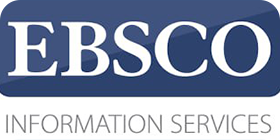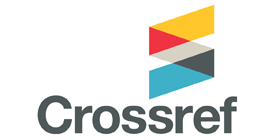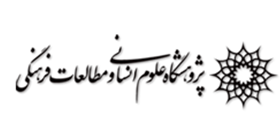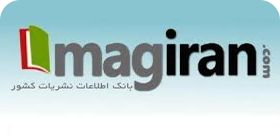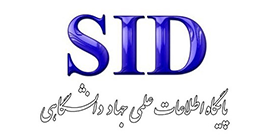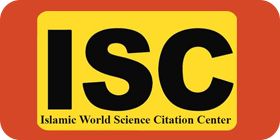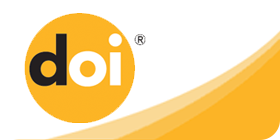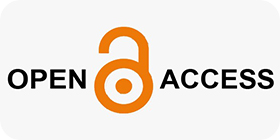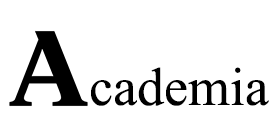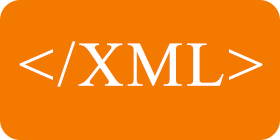Designing and Validating a Conceptual Model of Challenges and Solutions for Arabic Language Education to Reduce Miscomprehension Based on the Lived Experience of Teachers in the Iraqi Educational System
Keywords:
Conceptual Model, Challenges and Solutions in Arabic Language Education, Miscomprehension, Lived Experience of Teachers, Iraqi Educational SystemAbstract
Purpose: This study aims to identify these challenges and propose practical solutions to reduce educational miscomprehension in Arabic language instruction.
Methods and Materials: The research method is based on a qualitative approach and the analysis of the lived experiences of Arabic language teachers (phenomenology), utilizing in-depth interviews for data collection.
Findings: The findings indicate that the absence of appropriate educational resources, the use of local dialects instead of Modern Standard Arabic, syntactic and morphological complexities, and the mismatch between curriculum content and students’ needs are the primary educational challenges. In contrast, the use of modern technologies, the design of interactive content, the development of teachers’ professional skills, and the adoption of participatory teaching methods are proposed as effective solutions.
Conclusion: This study, by presenting a conceptual model, emphasizes the importance of revising the Arabic language education system to facilitate sustainable and effective learning among students.
Downloads
References
Abu-Irmies, A. J. (2014). Difficulties of Teaching Arabic to Speakers of Other Languages in Jordan Middle East University]. https://meu.edu.jo/libraryTheses/5870c7921abe6_1.pdf
ACSPS. (2020). Education in Iraq: Impact of COVID-19, protests, and pre-existing crises on needs. https://www.acaps.org/fileadmin/Data_Product/Main_media/20201109_acaps_thematic_report_on_education_in_iraq.pdf
Alsubhi, A., Bin Mohamed Adnan, M. A., Bin Yusof, A., Awae, F., & Abuhassna, H. (2023). Cooperative Learning, Method, Strategy, and Its Importance in Language Learning: Arabic Language as a Mode. International Journal of Academic Research in Business and Social Sciences, 13(12). https://doi.org/10.6007/IJARBSS/v13-i12/19932
Azmi, Z. (2024). Arabic Language: Traditional vs AI-Enhanced Instruction.
Hamidin, N. M. (2015). Effective technique of teaching and learning Arabic language in the classroom: A case study in selected national religious secondary schools (SMKA) in Selangor. Singapore.
Hussein, A. A. (2023). The Impact of E-Learning on the Professional Development of Arabic Language Teachers in Iraq, according to their Point of View. Rivista Italiana di Filosofia Analitica Junior, 14(2). https://jwfs.alzahra.ac.ir/article_4955.html
Kahiha, A. H. (2023). Methods and strategies for teaching Arabic grammar and its relationship to learners' linguistic weakness the third year of secondary education - a sample. Linguistic Issues Journal, 4(3), 66-83. https://doi.org/10.61850/lij.v4i3.115
Long, M. (2014). Second language acquisition and task-based language teaching. John Wiley & Sons. https://www.wiley.com/en-us/Second+Language+Acquisition+and+Task-Based+Language+Teaching-p-9780470658949
Longfield, J. (2009). Discrepant teaching events: Using an inquiry stance to address students' misconceptions. International Journal of Teaching and Learning in Higher Education, 21(2), 266-271. https://files.eric.ed.gov/fulltext/EJ899314.pdf
Meskine, S. (2024). The Role of Technology in Teaching Arabic. https://www.irma-international.org/viewtitle/339549/?isxn=9798369331323
Mohammadzadeh Soltan Ahmadi, A., & Soleiman Nejad Bari, A. (2021). Factors influencing misunderstandings in Arabic language education in Iranian schools. Qom.
Montazer, G. A., & Al-Rikabi, Y. K. (2021). Identifying the obstacles of implementing e-learning in Iraqi universities. 2021 7th International Conference on Web Research (ICWR),
Murad, M. K. (2007). Language Attitudes of Iraqi Native Speakers of Arabic: A Sociolinguistic Investigation University of Kansas]. https://core.ac.uk/reader/213405780
Nasser, N. L. (2021). The Challenges of Teaching Arabic to Non-Native Speakers. Journal of Arabic Language for Specialized Research (JALSR), 6(1), 55-80. https://jalsr.misd.tech/060104?lang=en
Piaget, J. (1971). Biology and Knowledge. University of Chicago Press. https://www.scirp.org/reference/referencespapers?referenceid=2375517
Ramazani Hafshjani, M. (2022). Examining misconceptions and replacing optimal methods in Arabic language teaching. Seventh National Conference on Innovation and Research in Management, Psychology, and Education. https://civilica.com/doc/1657600
Ramos, M. (2014). Major Challenge of Arabic Language Learning - Dialects. https://fundforeducationabroad.org/journal/major-challenge-of-arabic-language-learning-dialects/
Savion, L. (2009). Clinging to discredited beliefs: The larger cognitive story. Journal of the Scholarship of Teaching and Learning, 9, 81-92. https://files.eric.ed.gov/fulltext/EJ854880.pdf
Shadbash, S., & Albakaa, T. (2017). Iraq: An overview. In Education in the Arab World (pp. 21-37). https://doi.org/10.5040/9781474271035.ch-002
Shamsuddin, S. M., & Hj. Ahmad, S. S. B. (2019). Problems of Teaching Arabic Language to Non-Native Speakers and its Methodological Solutions. Advances in Social Sciences Research Journal, 6(6), 151-160. https://doi.org/10.14738/assrj.66.6710
Taha-Thomure, H. (2008). The status of Arabic language teaching today. Education, Business and Society: Contemporary Middle Eastern Issues, 1(3), 186-192. https://doi.org/10.1108/17537980810909805
UNICEF. (2022). Educational Challenges in Iraq: A Focus on Language Learning. https://www.unicef.org/iraq/what-we-do/education
Wahyuni, S., Ritonga, M., & Afrianti, W. (2023). Systematic Review of Learning Method for Teaching Arabic Listening and Speaking Skills. Al-Hayat: Journal of Islamic Education, 7(1), 30. https://doi.org/10.35723/ajie.v7i1.321
World Bank. (2022a). Education Finance in Iraq: Challenges and Opportunities. http://documents1.worldbank.org/curated/en/099091824091030738/pdf/P1711651cfac2b031a5a512591a8024209.pdf
World Bank. (2022b). Educational Policies and Political Instability in Iraq. http://documents1.worldbank.org/curated/en/099091824091030738/pdf/P1711651cfac2b031a5a512591a8024209.pdf
Yaakub, M. B., & Bakir, M. (2007). Teaching Arabic as a second language: An evaluation of key word method effectiveness. Jurnal Teknologi, 46(1), 61-72. https://journals.shirazu.ac.ir/article_5224.html
Yaseen, B. H., Shakir, H., & Mansor, T. (2016). The Planning Policy of Bilingualism in Education in Iraq. International Journal of Applied Linguistics & English Literature, 5(3), 1-6. https://doi.org/10.7575/aiac.ijalel.v.5n.3p.1
Downloads
Published
Submitted
Revised
Accepted
Issue
Section
License
Copyright (c) 2025 Ali Abbas Neamah Alibadi, Mehdi Shariatmadari, Haidar Mohsen Salman Al-Shuwaili, Zohreh Agha-Kasiri (Author)

This work is licensed under a Creative Commons Attribution-NonCommercial 4.0 International License.


